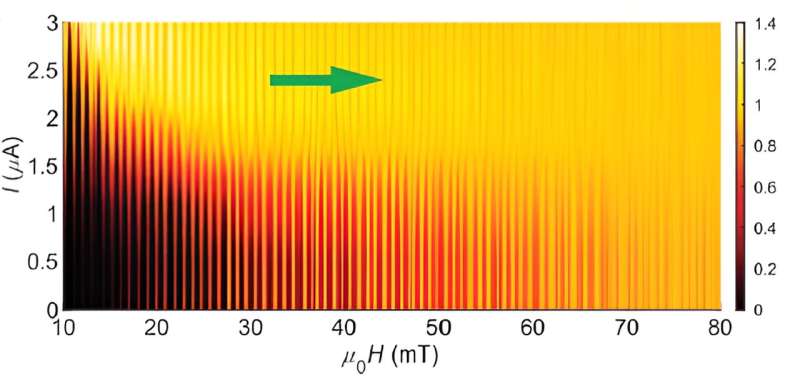
Topological materials are materials that have unusual properties that arise because their wavefunction—the physical law guiding the electrons—is knotted or twisted. Where the topological material meets the surrounding space, the wavefunction must unwind. To accommodate this abrupt change, the electrons at the edge of the material must behave differently than they do in the main bulk of the material.
This results in what scientists call edge states. If the topological material is also a superconductor, the bulk and the edge are both superconducting but they behave differently. This is a surprising situation, much like two touching pools of water that do not merge.
A study in Nature Physics shows that the superconducting edge currents in the topological material molybdenum telluride (MoTe2) can sustain big changes in the “glue” that keeps the superconducting electrons paired. This is important because electrons pairing up is what makes electricity flow freely in a superconductor.
Topological superconductors are a possible new type of superconductors that are predicted by theory. If confirmed, they will enable the next generation of quantum technologies because they contain special particles called anyons.
Unlike electrons, anyons remember their position. This allows them to be arranged to perform quantum computing operations in a way that protects against errors. Topological superconductors also carry special currents that flow at their borders, called “edge supercurrents.” Researchers can use these currents to create and control anyons. This will help researchers create quantum technologies and energy-efficient electronics.
When MoTe2 becomes superconducting, the supercurrent (the maximum current that can be injected without destroying superconductivity) oscillates in a magnetic field. The edge supercurrent oscillates more rapidly than that in the bulk, showing up as a characteristic modulation of the bulk response.
Superconducting currents are carried by paired electrons, and the glue that holds the pairs together can have widely different strengths and symmetries for different materials.
To enhance the glue (pair potential) in MoTe2, scientists deposited niobium (Nb) on top of it, because Nb has a stronger pair potential. The Nb pair potential spills into MoTe2 and the electrons in the latter feel the stronger glue for a while.
This leakage strengthens the supercurrent oscillations but also reveals incompatibility between the Nb and the MoTe2 pair potentials. The two cannot seamlessly merge and the wavefunction guiding the edge electrons switches between the Nb and the MoTe2 pair potential, according to which potential prevails.
The choice made by the edge electrons is reflected in the oscillations. These are noisy when the edge pair potential differs from that of bulk MoTe2, and almost noise free when the two are the same.
This study not only confirms the existence of edge supercurrents but shows that they can be used to monitor the behavior of superconducting electrons in topological superconductors.
More information:
Stephan Kim et al, Edge supercurrent reveals competition between condensates in a Weyl superconductor, Nature Physics (2024). DOI: 10.1038/s41567-023-02316-9
Provided by
US Department of Energy
Citation:
Superconductivity study confirms existence of edge supercurrents (2024, August 26)
retrieved 26 August 2024
from https://phys.org/news/2024-08-superconductivity-edge-supercurrents.html
This document is subject to copyright. Apart from any fair dealing for the purpose of private study or research, no
part may be reproduced without the written permission. The content is provided for information purposes only.
